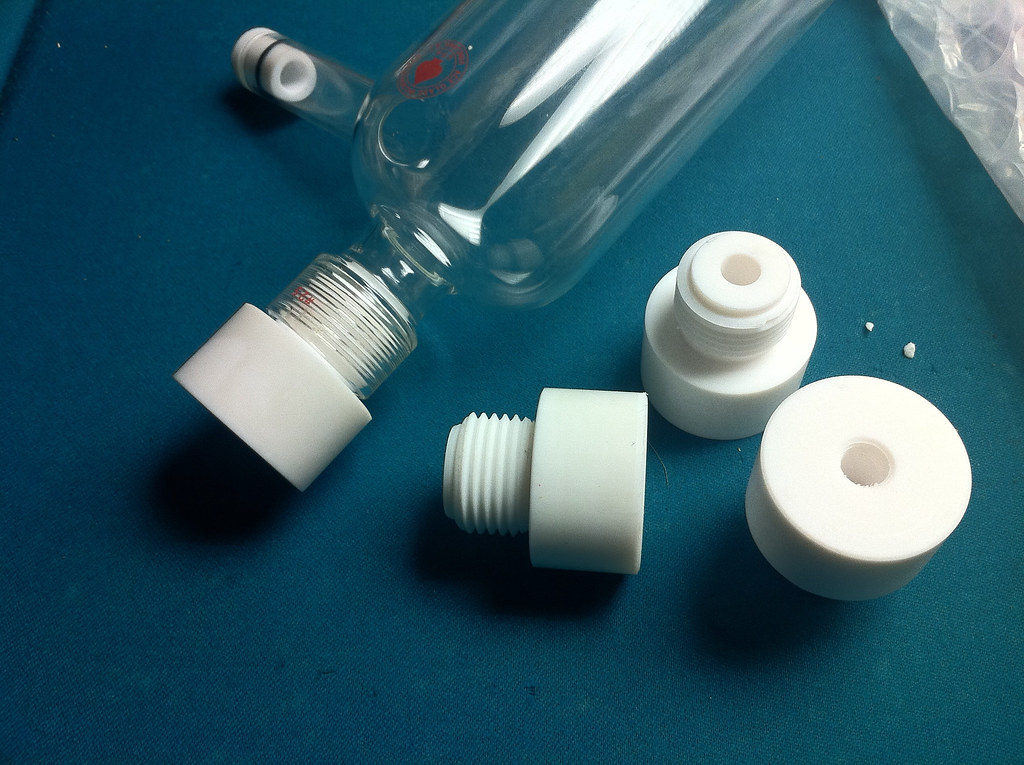 by Doug Coulter » Mon Oct 18, 2010 12:19 pm
by Doug Coulter » Mon Oct 18, 2010 12:19 pm
Yes, I'm fighting (mentally for now) with teflon's flow properties around my new HV rig, which I plan to insulate with teflon all the way to inside the tank. Turns out about .4" of teflon, or in other words, a bored out 1" piece with a wire in it, is good for my projected 180kv or so. But if you expose the end of that in vacuum, it's not going to work. So I will probably turn it down to fit into quartz or pyrex tubing with a vacuum seal on the end with a conductor passing through, and use teflon as the filler inside that tubing, which will be the mechanically strong part and seal through the tubing coupler. It can be thicker outside the tank so the connection can be buried inches deep in that end so as not to have arcs outside the tank.
Fusor HV feedthroughs are a world of their own, as the hot D ions reduce things like quartz to silicon and they become conductive....fail. So you have to shield the business end with pure Al2O3 which reduces to a lower oxide only, which evaporates...I have found that an outermost pyrex shield is conductive enough so that it stays close to ground at the "action end" and doesn't attract the hot D+ as badly,,, but can't do that if it's sealed around the conductor! And you can't just leave the conductor floating in the gas in there, or you get lengthwise arcs from Paschen's law effects -- this is truly a hard one. (I'll discuss this more on a more topical thread for it) Sadly, even the FT guys at CERN and ITER don't really have a solution to this weird environment at this point, though they have made some helpful suggestions. Most of those involve deliberately warping the E field so as not to have the ions hit the thing, as at these energies they will reduce almost anything in the chemical sense.
Posting as just me, not as the forum owner. Everything I say is "in my opinion" and YMMV -- which should go for everyone without saying.
 Teflon parts by macona, on Flickr
Teflon parts by macona, on Flickr End cap by macona, on Flickr
End cap by macona, on Flickr